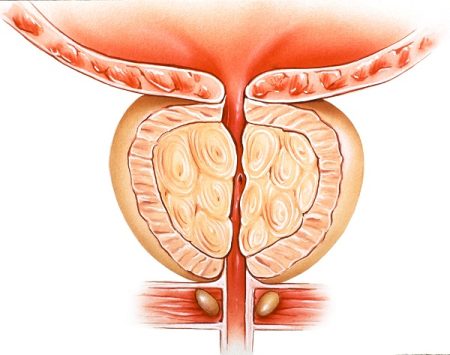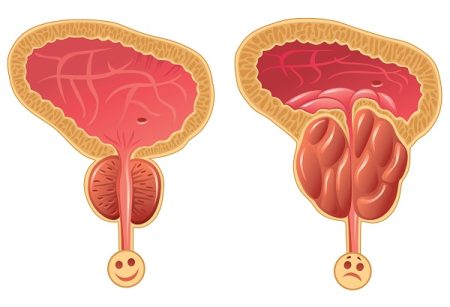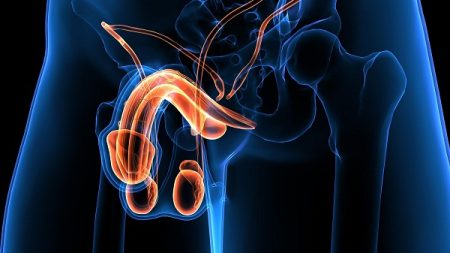
What is the prostate gland?
The prostate gland is a small walnut-sized gland situated below and right in front of the bladder in males. This gland surrounds the urethra, the tube through which semen and urine exit the body. The prostate gland has two or more lobes which are enclosed by an outer layer of tissue.
The gland is a part of the male reproductive system and its function is to produce semen (fluid) which nourishes and protects sperm when they travel to the female egg. Prostate fluid or semen is essential for men’s fertility.
Prostatitis
Swelling and inflammation in the prostate gland are called Prostatitis. It often causes difficulty in urination and pain to the person suffering. Just like any other inflammation, prostatitis can be associated with the response of the body toward infection.
It sometimes causes flu-like symptoms and pain in the groin, pelvic area, and genitals. Prostatitis can develop in men of any age but it commonly affects men between the ages of 30 to 50 years.
The exact cause of prostatitis is not known or we can say that multiple factors cause prostatitis.
The onset of this disease may be gradual or sudden depending upon the causative agent. Some patients take more than a month to recover and at times, the infection may recur. This condition is called chronic prostatitis. The patient might improve quickly, either with treatment or on its own.
The disease should not be confused with cancer of the prostate and enlarged prostate. Based on phases of infection, the disease is categorized into two stages:
Chronic prostatitis: This type of prostatitis may come and go over a month and is the most common type of prostate condition. It is not usually caused by infection.
Acute prostatitis: In this type of prostatitis, severe symptoms develop suddenly. It is quite rare but very serious. Acute prostatitis requires immediate attention and treatment. It is caused by infection.
The infection is often caused by bacteria in the groin area. The infection may be due to the leaking of bacteria present in urine into the prostate gland or may be due to sexual contact with an already infected person.
E. coli is the most commonly found bacteria in the semen of a person suffering from prostatitis. Antibiotics are used to treat bacterial prostatitis.
The chances of recurring infection are very high if the bacteria are not completely removed from the gland. Recurring infections and chronic infections are in turn quite difficult to treat.
Another reason for developing prostatitis is nerve damage in the lower urinary tract due to surgery or trauma to the area. In most of the cases, causes are not identified. The causes of prostatitis differ depending on the type. On average, about 2 million people report this condition in a year. Broadly, prostatitis is categorized into the following four types:
- Acute Bacterial Prostatitis
- Chronic Bacterial Prostatitis
- Chronic Pelvic Pain Syndrome
- Asymptomatic Inflammatory Prostatitis
The above-mentioned types of prostatitis are explained as:
Acute Bacterial Prostatitis
Bacterial infection is the root cause of this type of prostatitis. The bacteria travel from the urethra or rectum to the prostate gland. It is the least common but severe form of prostatitis and may begin abruptly.
Symptoms of this problem are sudden and painful. They may require health consultation right away. The following are the symptoms commonly reported:
- severe burning sensation during urination
- pain during urination and micturition (feeling of urinating)
- fever and chills
- muscle pain
- fatigue
In addition, the patient may also feel pain at the base of the penis and scrotum. Pain in the lower back with a feeling of a full colon is often associated with it.
Due to swelling in the prostate, the person may find it difficult to urinate. The urine stream may become less in some cases. Immediate medical attention is required in this case.
Chronic Bacterial Prostatitis
This type of prostatitis is categorized as a recurring bacterial infection in the prostate gland. Symptoms may be minor between two attacks and the patient may feel disease-free. This type of prostatitis is quite difficult to treat.
Some symptoms are mentioned here:
- burning sensation during urination
- frequent urge to urinate (especially at night)
- pain during intercourse and ejaculation
- pain in the testicles, penis, and bladder
- pain between genitals and anal opening
The infection is low-grade and can persist for weeks and months. Symptoms are not flu-like as in the case of acute prostatitis.
Chronic Pelvic Pain Syndrome (CPPS)
Chronic non-bacterial prostatitis, also known as chronic pelvic pain syndrome is the most common form of prostatitis. The symptoms are somewhat common with Chronic Bacterial Prostatitis. However, no bacteria are found to trigger it.
Doctors suggest that it may be a result of a series of events in the human body. The initiating factor may be:
- stress
- undetectable infection-causing agent
- physical trauma
Depending on the presence and absence of infection-fighting calls in urine, semen, and prostatic fluid, it is further categorized as an inflammatory and non-inflammatory type. Some of the signs are mentioned below:
- burning sensation and pain during urination
- pain in the bladder
- trouble in ejaculation
- frequent urge to urinate (especially at night)
- pain in the testicles, penis, and bladder
- pain between genitals and anal opening
The condition leads to high sensitivity and sometimes may even cause nerve damage. Chronic non-bacterial prostatitis may negatively affect the bladder, sexual functioning, and bowel movement of the person.
Asymptomatic Inflammatory Prostatitis
This condition is diagnosed incidentally during checkups for infertility and prostate cancer. The person suffering may not complain of any symptoms or discomfort. The infection is detected based on the presence and absence of infection-fighting cells (white blood cells) in the semen and prostatic fluid.
It may eventually get better with proper treatment. The patient may not show any obvious signs. It may be found when the person is being checked for other problems.
Following are the symptoms of Asymptomatic Inflammatory Prostatitis:
- pain and trouble in urination
- strain on bladder muscles during urination
- frequent urge to urinate
- burning sensation during urination
- painful ejaculation
- painful bowel movement
- pain in the lower back, pelvis, and pubic area
- blood in semen
- sexual dysfunction in severe cases
The symptoms though can be mild, should never be ignored. Frequent painful conditions may be a warning sign for the person. The disease is somewhat common but can be treated with proper medications healthcare consultation and available treatment for prostatitis.
FAQs
Is prostatitis a rare condition?
No, prostatitis is relatively common. It affects a significant number of men, and awareness is crucial for timely diagnosis and management.
Can prostatitis lead to prostate cancer?
Prostatitis itself doesn't directly cause cancer, but chronic inflammation may be associated with an increased risk. Regular check-ups are essential for overall prostate health.
Are there different types of prostatitis?
Yes, prostatitis is classified into four types: acute bacterial, chronic bacterial, chronic pelvic pain syndrome, and asymptomatic inflammatory prostatitis.
Can prostatitis affect sexual function?
Yes, prostatitis can impact sexual function, leading to symptoms like erectile dysfunction or pain during ejaculation. Seeking medical advice is important for proper management.
Is prostatitis preventable?
While not entirely preventable, adopting a healthy lifestyle, managing stress, and practicing safe sex can reduce the risk of prostatitis. Regular medical check-ups aid in early detection.






